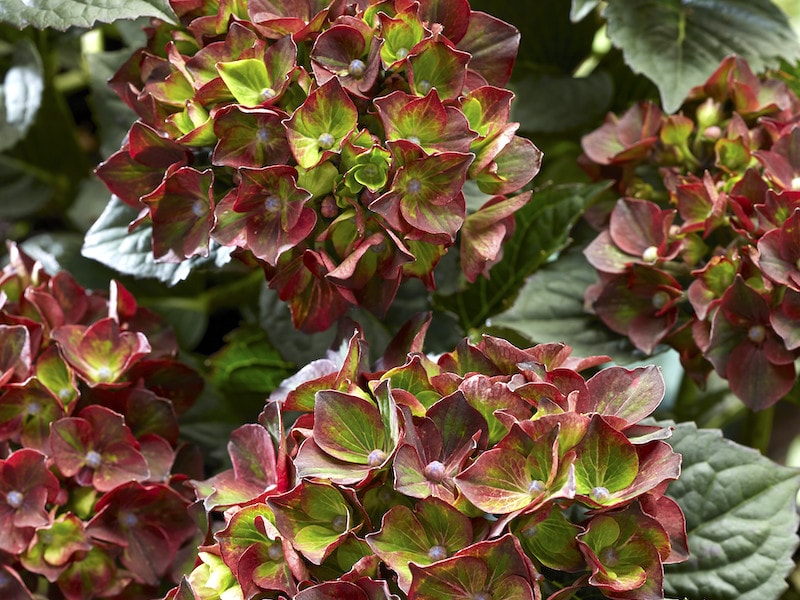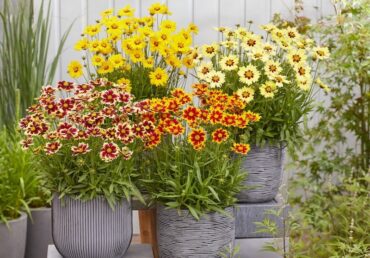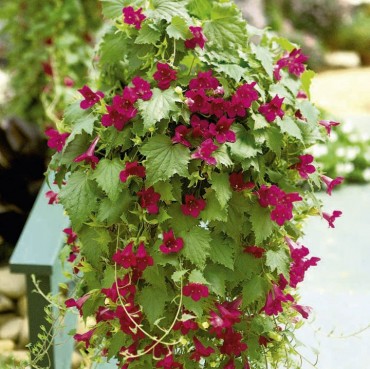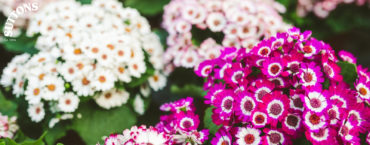For a deciduous, summer-flowering shrub, hydrangeas are hard to beat. With their big, bold flower heads and attractive foliage, they’re a colourful and long-lasting addition to the garden. They’re easy to grow, too, especially with some expert advice from experienced gardeners. Here we provide just that – a comprehensive collection of information, growing tips and trouble-shooting advice to help you get the very best from your hydrangeas.
Inspired to grow your own? Browse our excellent range of hydrangea plants and prepare to be spoilt for choice!
Contents:
- Best advice on the different types of hydrangea
- Best advice on how and where to plant hydrangeas
- Best advice on how and when to prune hydrangeas
- Best advice on propagating hydrangeas
Best advice on the different types of hydrangea
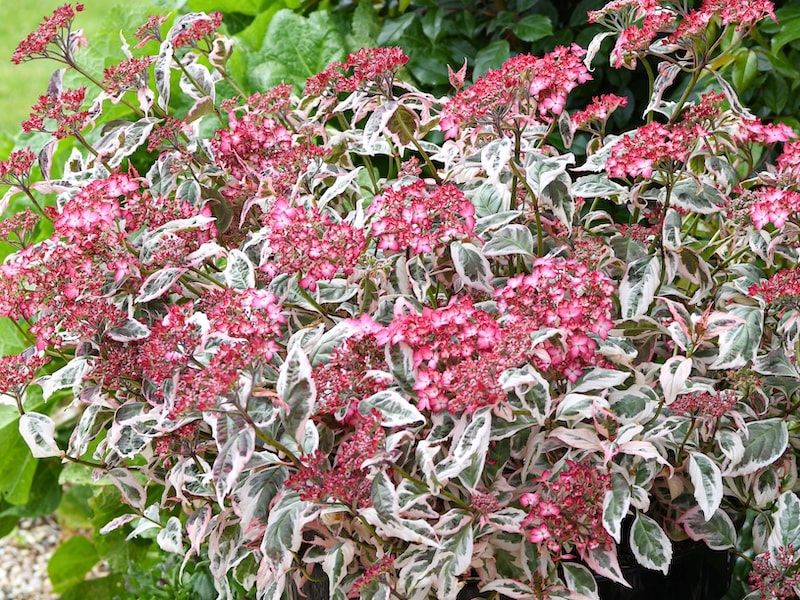
Image: Hydrangea serrata ‘Euphoria Pink’ from Suttons (©Thompson & Morgan)
There are many different types of hydrangeas, explains Carol Bartlett at The Sunday Gardener. Hydrangea macrophylla “includes both mopheads and lacecaps, which are the most commonly grown and have large showy blooms.” Hydrangea paniculata has cone-shaped flowers that “appear in late summer early autumn, changing colour as they fade.” Alternatively, Hydrangea arborescens produces beautiful green-white flowerheads that gradually turn pure white as they mature. And, according to Carol, the climbing Hydrangea petiolaris is well worth growing for its “fantastic fresh green foliage in spring and lovely delicate flowers in early summer.” Read her excellent article for a full description of each.
“Flamboyant and yet somehow subtle, hydrangea bushes have everything,” says Alan from Down to Earth. “Add to this the modern improved varieties that have extended the colour range, and you have a hardy long-living shrub that is easy for a first-time gardener but interesting enough to keep the plant connoisseur happy too!” Alan adds that hydrangeas are a great low-maintenance plant that’s happy to “muddle along with just the minimum of attention but, given some TLC, will do so much better.” Want to learn how to apply a little of that TLC? Check out Alan’s excellent guide for tips.
Hydrangeas are “such easy plants and offer so much for the garden,” says Alexandra of The Middlesized Garden. In a highly informative interview with hydrangea expert Roger Butler, they discuss many common growing questions as well as the recent surge in interest in Hydrangea paniculata. Confused about hydrangea colours? Don’t be. “The macrophyllas change colour according to the pH of the soil,” Roger says. Acid soil makes them blue, while alkaline soil turns them pink.
Over at @emma_crawforth, gardener and writer Emma explains that the appeal of hydrangeas is about so much more than summer flowers – it’s about how the flowers and the foliage change through the season. Posting a stunning image of a Hydrangea ‘Preziosa’, she explains how “the pink intensifies and is joined by deep red autumn foliage.” Beautiful!
Best advice on how and where to plant hydrangeas
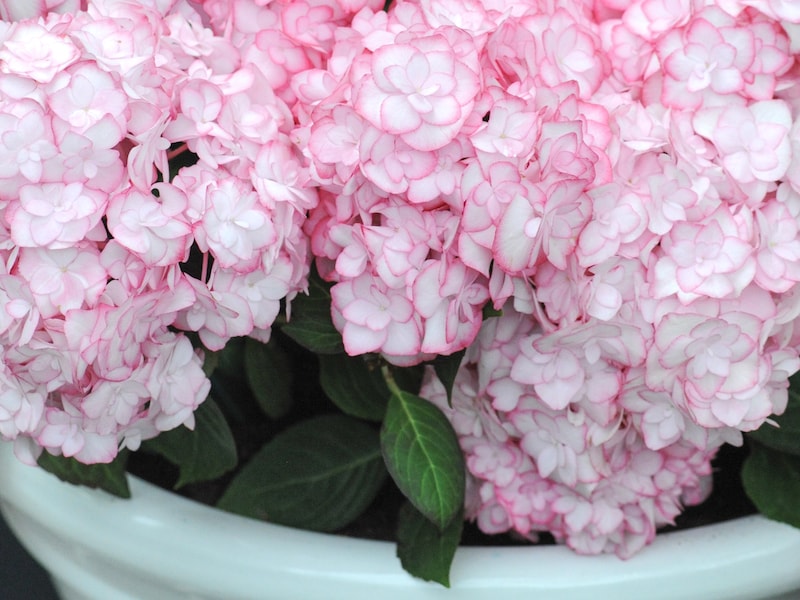
Image: Hydrangea macrophylla ‘Miss Saori’ from Suttons (©Thompson & Morgan)
“Hydrangeas like dappled shade – that means not too sunny and not too shady,” says Louise Findlay-Wilson of Blooming Lucky. If your garden is a south-facing sun trap with dry soil though, don’t despair. As Louise says, “I’ve got round this problem in my garden by growing mine under a line of small trees. So while my hydrangeas are south-facing, in the summer, the trees provide a bit of shade.” Do you have a deeply shaded spot, such as a north-facing wall? Louise says the wonderful climber Hydrangea petiolaris is a real contender for you.
Over at My English Country Cottage, Rebecca agrees that dappled shade is best for hydrangeas. She says the perfect position is “in a sheltered location with sunny mornings and shady afternoons.” She recommends planting new hydrangea shrubs in spring or autumn, but says not to “plant them deeper than they were in their original containers.” Her expert advice is to “dig the planting hole 2ft wider than the root ball and keep the same depth.”
“Growing hydrangeas in pots is a wonderful option for anyone who has a small garden or limited space,” says John Moore at Pyracantha. He says you need good-sized pots to deal with hydrangeas’ rapid root growth and you must stay on top of watering: “Usually, hydrangeas [in pots] require watering at least twice a week, however, the conditions of the weather at any given time could change and you may need to increase your watering levels.” Check out John’s excellent post for his favourite hydrangeas to grow this way.
Best advice on how and when to prune hydrangeas

Image: Hydrangea arborescens ‘Strong Annabelle’ from Suttons
Before pruning your hydrangeas, work out whether you have varieties that flower on new or old wood, advise Andrew and Paul from Mad About Gardening. Hydrangea paniculata and Hydrangea arborescens flower on new wood, making them more forgiving of a hard prune. However, Hydrangea macrophylla and Hydrangea serrata both flower on last year’s wood, so cutting them back too hard is likely to reduce the number of flowers in summer. These gardeners always prune their hydrangeas in spring – watch their helpful video for a practical demonstration.
Another advocate of waiting until spring to prune, Clive of @clivenichols, recommends leaving the spent blooms of Hydrangea arborescens ‘Annabelle’ well alone so you can enjoy the structural beauty of the flower heads. Taking on “an antiqued look,” he admires the way that the fading flowers are “no longer fresh but beautifully adorned with a crown of bronze.” Take a look at his beautiful photos before you reach for the secateurs!
You need to prune Hydrangea macrophylla to rejuvenate the shrub and keep it in a neat and tidy shape, says Lee at the ever-informative Garden Ninja. If you don’t, he says that it will get “taller and ‘leggier’ as the years go on, resulting in flowers on the top…and exposed woody bare stems below.” He doesn’t prune his hydrangeas until February, as the “faded flowers add winter interest and offer frost protection to the shrub.” The exception to this is the climbing Hydrangea petiolaris, which Lee recommends pruning directly after it has finished flowering in the summer.
Unlike macrophylla, Hydrangea arborescens and paniculata flower on the current year’s growth making them very easy to prune. Over at @pollyanna_wilkinson, Pollyanna simply cuts “the whole plant down to the first set of buds above ground – usually 20-30cm from ground level.” She says that this gives lovely strong stems for summer. But if you want to retain some height, she says, “you can just reduce the whole plant by half.” Head over to Pollyanna’s Insta to find out more.
Best advice on propagating hydrangeas

Image: Hydrangea macrophylla ‘Camilla’ from Suttons (©AllPlant / Visions BV, Netherlands)
If you’re planning to take hydrangea cuttings, make sure your plants are well-hydrated by watering them the night before and taking cuttings first thing in the morning, says Mark at Mark’s Garden UK. Watch his clear and informative YouTube video for a detailed, step-by-step guide on how to take softwood cuttings from Hydrangea ‘Annabelle’.
Over at @snippingstems, Ria removes the lower leaves when propagating hydrangeas, but she also scrapes off some of the stems to “encourage root formation”. She adds that she snips the top leaves in half, and dips the cutting in rooting hormone before popping into soil. Her top tip is to “keep the cutting well watered and out of direct sunlight.” Follow her on Insta for a wealth of practical tips.
If you’re interested in propagating climbing hydrangeas, please take a look at the YouTube channel The Money Saving Gardener. Anya’s quick reel demonstrates how to use the layering method to get new hydrangeas from an existing plant. All you need is a pot of compost, a donor plant and patience – Anya reckons about 8 weeks should do it. This great little video explains the whole process in one minute flat!
We hope our expert hydrangea growers have answered all your questions. Looking for more advice on how to fill a herbaceous border? Head over to our expert guide to growing shrubs, to find out all you need to know.
Lead image: Hydrangea macrophylla ‘Roco Black Knight’ from Suttons (©De Jong Plant BV / Visions BV, Netherlands)
Last Updated on March 20, 2025 by Suttons Horticultural Team

